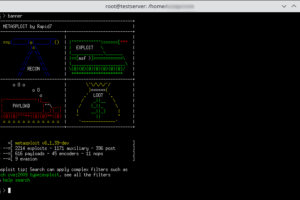How to Secure Your Website: Website Security Issues and Solutions
SiteLock data shows that websites endure an average of one attack every 15 minutes (approximately 94 attacks per day). Here’s how to protect your business without spending a ton of time and money
There as no two ways about it: getting hacked sucks. If your website is hacked, you’re likely to have a bunch of different problems — some of which can last for months. These issues include:
- Website getting defaced with spam, popups, malware
- Losing Google SEO rankings
- Having your Google Ads and other advertising campaigns disabled
- Having your outbound emails blocked by spam filters
- Receiving communications and reviews from angry customers and partners
- Getting slapped with possible legal actions or bank fines
If you’re like most website owners, you’d like to avoid the stress, expense, and damage that come with a hacked website. But what are the most effective ways to secure your website? If you had just a few dollars and limited time, what could you do that would effectively keep your website safe?
In this article on website security issues and solutions, we’ll walk you through how to secure your website by first exploring the eight most common types of website security threats and what you can do to protect your site against them.
Website Security Issues and Solutions Should Focus on Real-World Risks
Protecting your website is a lot like protecting your home — to stay safe, you need to protect against the most common and likely threats and not the outliers.
Sure, it’s possible that a foreign government spy could break into your house and plant an ultra-high listening device to monitor your phone calls to your Uncle Joe (who turns out to secretly be a CIA agent). But unless your name is Bond, James Bond… the chance of that happening is slim to none.

To protect your home and family effectively, you need to defend against the most likely scenarios — for example, someone breaking in to steal your TV…or bad wiring starting a fire. Those common threats are what you need to protect your family against.
A similar thing is true when it comes to website security. You’re not likely to be targeted by government cybersecurity operatives… but you will be targeted by opportunistic cybercriminals looking for easy targets. To keep your business running smoothly, you need to defend against the most likely threats that could damage your website. This leads to the two-part, million-dollar question: What are the most common cyber threats to my website, and how do I protect against them?
The Overwhelming Majority (e.g., 99%) of Website Hacks Are Caused By 8 Security Issues
Hackers are constantly inventing new attack methods, but the overwhelming majority of successful website attacks are the “same old thing” that worked last week. We analyzed data from various sources, including vulnerability databases, OWASP’s top 10 list, SiteLock data, and our own studies — to identify the eight most common security threats in 2021. We’ve also taken the initiative to list the top ways to prevent each one.
Without further ado, let’s explore the most common security threats that every small business needs to protect their website from. (Note: These website security issues and solutions aren’t organized in any specific order. We just added the numbers to make the content easier to follow.)
| Website Security Threat(s) | Threat Description(s) | How to Secure Your Website |
| Not Fixing Known Vulnerabilities | This is a large attack surface for many organizations. Relying on outdated CMS plugins (e.g., WordPress) is one of the biggest risks in this category. | Use a web application firewall Perform regular vulnerability testing & patching |
| Insecure Data | Failing to encrypt sensitive data is both a security concern as well as a compliance issue. | Enable HTTPS on all pages of your website Encrypt all sensitive data before uploading it to the cloud or sending it via email |
| Security Misconfigurations | Misconfigurations are a huge issue. Verizon report data shows that 85% of data breaches involved the “human factor,” which includes misconfigurations and negligence. | Perform regular website testing Create procedural documents that walk users through technical processes Require all users to complete mandatory security awareness training Carry out regular website security testing Use a web application firewall can help in some cases |
| Login Attacks | Gaining unauthorized access to accounts is the goal of most hackers, and they use many different techniques and scam methods to achieve it. This includes everything from social engineering tactics to brute force methods. | Enable HTTPS across your site Make awareness training mandatory for all users Implement multi-factor authentication or passwordless authentication Use a web application firewall to keep an eye on application layer traffic |
| Security Logging Failures | An ounce of prevention is better than a pound of cure. | Daily website backups Web application firewall logging & monitoring |
| Injection Attacks (Client-Side and Server Side) | Injection attacks can occur in multiple ways and target the front-end or back-end of your site. For example, SQL injections enable attackers to log in to privileged accounts and steal data. JavaScript-based cross-site scripting (XSS attacks) tactics also give attackers access to accounts and the ability to steal data or spread malware | Check user inputs Follow other secure coding best practices Provide cyber awareness employees (to help them recognize and avoid phishing scams) Carry out regular vulnerability testing Use a WAF |
| Botnets and Zombie Devices | Although it may make you think of Skynet, the “bad bots” that we’re talking about are less Hollywood and more real world. These bots: Create spam, Send phishing emails, Use DDoS attacks to overload websites, and Cause many other issues. | Use a WAF (if you haven’t set one up already) Implement a content delivery network (CDN) |
| Backdoors & Other Malware | Hackers can gain 100% control of your website by installing certain types of malicious software or code. (Don’t give them a chance!) | Use a WAF Implement daily malware scans |
Website Security Issues and Solutions — 9 Protections That Every Site Needs
Protecting your website against the most common website security issues and threats doesn’t have to be difficult. With a few well-chosen precautions, you can greatly reduce the chances that you’ll fall victim to one of the eight threats mentioned above.
1. Put a Web Application Firewall to Work
Use a web application firewall, or WAF on your web server or CDN to inspect all application layer website traffic requests. This way, the WAF can block a request if it’s malicious, thereby thwarting human and machine attackers alike.
Recommendation: Not all web application firewalls are the same. To implement a WAF to your greatest advantage, choose a fully managed web app firewall. With this solution, the rules are updated regularly, which helps to protect you against the latest threats.
2. Restrict Access to Only Those Who Need It
This should go without saying: not everyone who wants access to everything actually needs it. Following the principle of least privilege is a great idea because it helps you to ensure that you’re only allowing users who need access to sensitive systems and data to have it.
Recommendation: Setting up access controls within your organization is kind of like raising kids: you sometimes have to tell them no (even though they won’t like it) because it’s the best way to keep them safe and secure. Likewise, you have to deny users’ unnecessary access requests to protect your organization and keep its data safe.
3. Carry Out Daily Vulnerability Testing on Your Site
Implement daily vulnerability scans to detect threats and security flaws on your website. This is among the best ways to protect your website and data against hackers. By identifying these weaknesses quickly, you can address vulnerabilities before a hacker uses them against you.
Recommendation: Rather than just choosing a random solution, do your homework and choose one that supports your website’s specific platform. For example, if you use Magento, ensure your vulnerability scanner supports it.
4. Double-Check Your Website Configurations and Follow Industry Best Practices
No matter how great or user-friendly your website is, it won’t matter if you don’t keep customers’ information secure.
Recommendation: Take the time to ensure you’ve got proper configurations in place and that you’ve crossed your T’s and dotted your I’s. Follow secure coding best practices and implement these website security tips from other industry experts.
5. Provide Mandatory Security Awareness Training
The cyber awareness of your employees can be the difference between your site staying secure versus it being hacked. All it takes is one employee clicking on a malicious link to trigger a world of trouble, so be sure your staff is trained to recognize social engineering tactics and common phishing scams.
Recommendation: You can find plenty of free security awareness training resources online. A couple of quick examples include the DoD Cyber Awareness Challenge and NIST’s online resources directory.
6. Encourage Users to Turn on Multi-Factor Authentication
Multi-factor authentication (MFA) helps to protect your website’s accounts against many types of login attacks. Even if a hacker somehow discovers your account password, they can’t put it to use without having the required secondary identification factor (such as a fingerprint or a physical security token).
Recommendation: While traditional MFA methods improve your security, a more secure method is using certificate-based authentication instead. This is a form of passwordless authentication because it uses a digital certificate to identify you (rather than you having to manually type in clunky passwords). But if you’d prefer a more traditional MFA method, you can enable it through any of the following methods:
- Using custom code,
- Installing a plugin, or
- Enabling MFA via your WAF.
7. Enable HTTPS on All Pages
It’s important to force HTTPS on every page of your website to ensure that your visitors are protected against insecure cookie attacks, password theft, and other risks. You can do this by installing a website security certificate (i.e., an SSL/TLS certificate) on your server.
Recommendation: Be sure you’re also securing all of your subdomains. A wildcard SSL certificate can help you do it quickly and cost effectively by using a single certificate to secure an unlimited number of subdomains.
8. Automate Website Backups So You Don’t Miss Anything
When things go wrong with your website, you don’t have time to sit back and relax. You need to have a solution in place that can help you get things back up and running right away. Regardless of the cause, having a recent website backup makes your life much easier and saves you a lot of time and money in terms of resources.
Recommendation: It’s always a good idea to create physical backups of your website. However, this shouldn’t be your only approach. You can set up automatic cloud backups with SiteLock or CodeGuard, too, so you have a second type of backup ready to go when (not if) things go wrong.
9. Scan Your Site For Malware Every Day
Checking your website every day for malware is your last line of defense — if something malicious slipped through, you want to find and remove it ASAP. Don’t give hackers access to your site and data even a moment longer.
Recommendation: Some tools check only your source code or your public website. If the solution you use doesn’t cover both, it’s likely going to miss malware that can cause serious harm and cost you loads of money. This is why it’s best to use a malware scanner that checks both avenues of approach.
Website Security Issues and Solutions Final Takeaway: Protect Your Site With SiteLock
Instead of cobbling together seven different solutions to protect your website, you can get all of the key pieces you need in one convenient dashboard with SiteLock:
- Daily malware scanning & cleaning
- Daily vulnerability testing
- Web application firewall capabilities
- Automatic vulnerability patching
- Automatic website backups
- Daily blacklist monitoring
Plus, SiteLock is affordable both with regard to your time and money. It costs just $15 per month and can be set up within minutes. This is a win-win scenario for you and your customers.





















2018 Top 100 Ecommerce Retailers Benchmark Study
in Web Security5 Ridiculous (But Real) Reasons IoT Security is Critical
in IoTComodo CA is now Sectigo: FAQs
in SectigoStore8 Crucial Tips To Secure Your WordPress Website
in WordPress SecurityWhat is Always on SSL (AOSSL) and Why Do All Websites Need It?
in Encryption Web SecurityHow to Install SSL Certificates on WordPress: The Ultimate Migration Guide
in Encryption Web Security WordPress SecurityThe 7 Biggest Data Breaches of All Time
in Web SecurityHashing vs Encryption — The Big Players of the Cyber Security World
in EncryptionHow to Tell If a Website is Legit in 10 Easy Steps
in Web SecurityWhat Is OWASP? What Are the OWASP Top 10 Vulnerabilities?
in Web Security